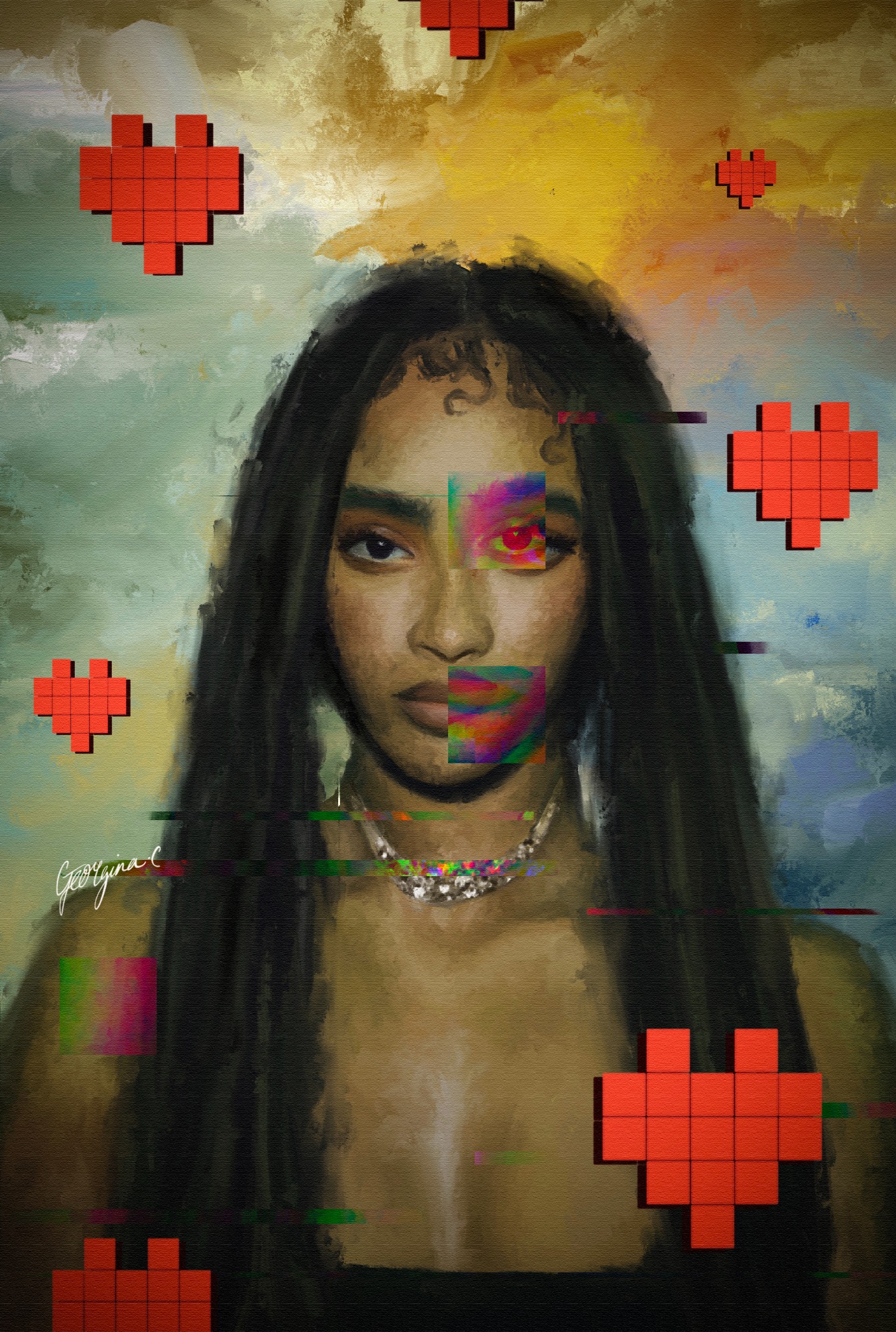
T0 B3 L1K3D, T0 B3 L0V3D (2023)
T0 B3 L1K3D, T0 B3 L0V3D (2023) examines identity, validation, and self-image in the age of the algorithm. Combining Baroque portraiture with digital glitch art, Georgina M. Cox explores how the language of love has been replaced by the metrics of visibility.
⤷ This piece began with a question: what does it mean to be loved in a world where being liked comes first? The title itself, written in digital syntax, reflects that blurred boundary between affection and performance, between connection and consumption.
The portrait draws from traditional oil techniques but is interrupted by digital interference. Red pixelated hearts float around the figure, mimicking the visual language of social media likes. Their flat, artificial presence contrasts with the softness of the subject’s face, which is rendered with human warmth and depth. Sections of her features are distorted by glitch effects, suggesting the way digital platforms fragment and reassemble identity into something consumable.
I wanted the piece to feel simultaneously sacred and synthetic. The warm lighting and painterly skin tones recall the intimacy of Baroque portraiture, while the pixelated overlay recontextualises that tradition within a hypermodern frame. The viewer is confronted by the coexistence of two aesthetics—one rooted in emotional realism, the other in technological distortion.
Her expression is calm but unreadable, suspended between sincerity and self-awareness. It mirrors the experience of existing online, where presentation often replaces presence. The colourful glitch that crosses her eye and mouth alludes to the distortion of emotional expression in digital communication—how emojis, metrics, and filters mediate what should be real.
At its core, T0 B3 L1K3D, T0 B3 L0V3D is about yearning. It reflects the modern condition of being constantly visible yet rarely seen. The hearts orbit her like offerings, but they carry no warmth. The painting asks whether love can still exist untouched by the mechanisms that now define it.
Ultimately, the work is both critique and confession: a meditation on digital intimacy and the longing to be known beyond the numbers.
0 Comments Add a Comment?